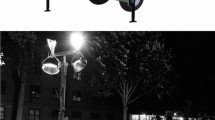Abstract
I simulate firms competing in an urban landscape that is segregated by income level. Some firms are located close to wealthy neighborhoods and far from competitors, but other firms do not enjoy these advantages. The probability that a household selects a certain firm to patronize depends on that firm’s price and its distance from the household. The firms have almost no information about the urban market they inhabit, but they can experiment with prices and learn what actions lead to higher profits. Firms that experience persistent losses go out of business. When transportation costs are low, households shop aggressively and the result that emerges resembles perfect competition. When transportation costs are high, households shop less aggressively, which gives firms greater market power. The results here more closely resemble monopolistic competition, with more firms surviving, higher prices and higher profits. However, this collusion is implicit, as there is no mechanism for the firms to communicate or explicitly collude with each other. I validate the model by conducting a Probit analysis of the factors that determine firm survival. I also conduct an econometric analysis of the factors that determine a firm’s price, quantity sold, and profit. Firms locating close to rival have a higher probability of going out of business. If these firms do survive, on average their profits are no different than the profits of firms that are not located close to a rival.



Similar content being viewed by others
Code availability
Will provide if required.
References
Akhundjanov SB, Toda AA (2019) Is Gibrat’s “economic inequality” lognormal? Empir Econ 1–21
Arifovic J (1994) Genetic algorithm learning and the cobweb model. J Econ Dyn Control 18(1):3–28
d'Aspremont C, Gabszewicz JJ, Thisse J-F (1979) On Hotelling’s "Stability in competition”. Econom J Econom Soc 47:1145–1150
Auchincloss AH et al (2011) An agent-based model of income inequalities in diet in the context of residential segregation. Am J Prevent Med 40(3):303–311
Bandourian R, McDonald J, Turley RS (2002) A comparison of parametric models of income distribution across countries and over time
Barr J, Saraceno F (2005) Cournot competition, organization and learning. J Econ Dyn Control 29(1–2):277–295
Brenner S (2005) Hotelling games with three, four, and more players. J Reg Sci 45(4):851–864
Gabszewicz JJ, Thisse J-F (1979) Price competition, quality and income disparities. J. Econ. Theory 20(3):340–359
Gode DK, Sunder S (1993) Allocative efficiency of markets with zero-intelligence traders: market as a partial substitute for individual rationality. J Polit Econ 101(1):119–137
Gupta B, Pal D, Sarkar J (1997) Spatial Cournot competition and agglomeration in a model of location choice. Reg Sci Urban Econ 27(3):261–282
Gupta B et al (2004) Where to locate in a circular city? Int J Ind Org 22(6):759–782
Hotelling H (1929) Stability in competition. Econ J 39(153):41–57
Huang A, Levinson D (2011) Why retailers cluster: an agent model of location choice on supply chains. Environ Plann B Plann Des 38(1):82–94
Huff DL (1963) A probabilistic analysis of shopping center trade areas. Land Econ 39(1):81–90
Irmen A, Thisse J-F (1998) Competition in multi-characteristics spaces: hotelling was almost right. J Econ Theory 78(1):76–102
Kimbrough SO (2011a) Chapter 9: Monopoly stories. In: Agents, games, and evolution: strategies at work and play. CRC Press, pp 185–199
Kimbrough SO (2011b) Chapter 10: Oligopoly: Cournot competition. In: Agents, games, and evolution: strategies at work and play. CRC Press, pp 201–242
Kimbrough SO (2011c) Chapter 11: Oligopoly: Bertrand competition. In: Agents, games, and evolution: strategies at work and play. CRC Press, pp 243–249
Kimbrough SO, Murphy FH (2009) Learning to collude tacitly on production levels by oligopolistic agents. Comput Econ 33(1):47
Kimbrough SO, Murphy FH (2013) Strategic bidding of offer curves: an agent-based approach to exploring supply curve equilibria. Eur J Oper Res 229(1):165–178
Larralde H, Stehlé J, Jensen P (2009) Analytical solution of a multi-dimensional Hotelling model with quadratic transportation costs. Reg Sci Urban Econ 39(3):343–349
Neven DJ (1986) On Hotelling’s competition with non-uniform customer distributions. Econ Lett 21(2):121–126
Schelling TC (1969) Models of segregation. Am Econ Rev 59(2):488–493
Sturley C, Newing A, Heppenstall A (2018) Evaluating the potential of agent-based modelling to capture consumer grocery retail store choice behaviours. Int Rev Retail Distrib Consum Res 28(1):27–46
Suresh SSG, Schauder SA (2020) Income segregation and access to healthy food. Am J Prevent Med 59(2):e31–e38
Tabuchi T (1994) Two-stage two-dimensional spatial competition between two firms. Reg Sci Urban Econ 24(2):207–227
Tabuchi T, Thisse J-F (1995) Asymmetric equilibria in spatial competition. Int J Ind Organ 13(2):213–227
Veendorp ECH, Majeed A (1995) Differentiation in a two-dimensional market. Region Sci Urban Econ 25(1):75–83
Acknowledgements
The author wishes to thank Steven O. Kimbrough and participants at the 2018 NYC Computational Economics & Complexity Workshop for comments on earlier versions of this paper. Any remaining errors are my own.
Funding
State of Oklahoma.
Author information
Authors and Affiliations
Contributions
This is a sole authored paper.
Corresponding author
Ethics declarations
Conflict of interest
The authors declare that they have no conflict of interest.
Additional information
Publisher's Note
Springer Nature remains neutral with regard to jurisdictional claims in published maps and institutional affiliations.
Rights and permissions
About this article
Cite this article
Fain, J. Should retail stores locate close to a rival?. J Econ Interact Coord 18, 129–162 (2023). https://doi.org/10.1007/s11403-021-00332-7
Received:
Accepted:
Published:
Issue Date:
DOI: https://doi.org/10.1007/s11403-021-00332-7




